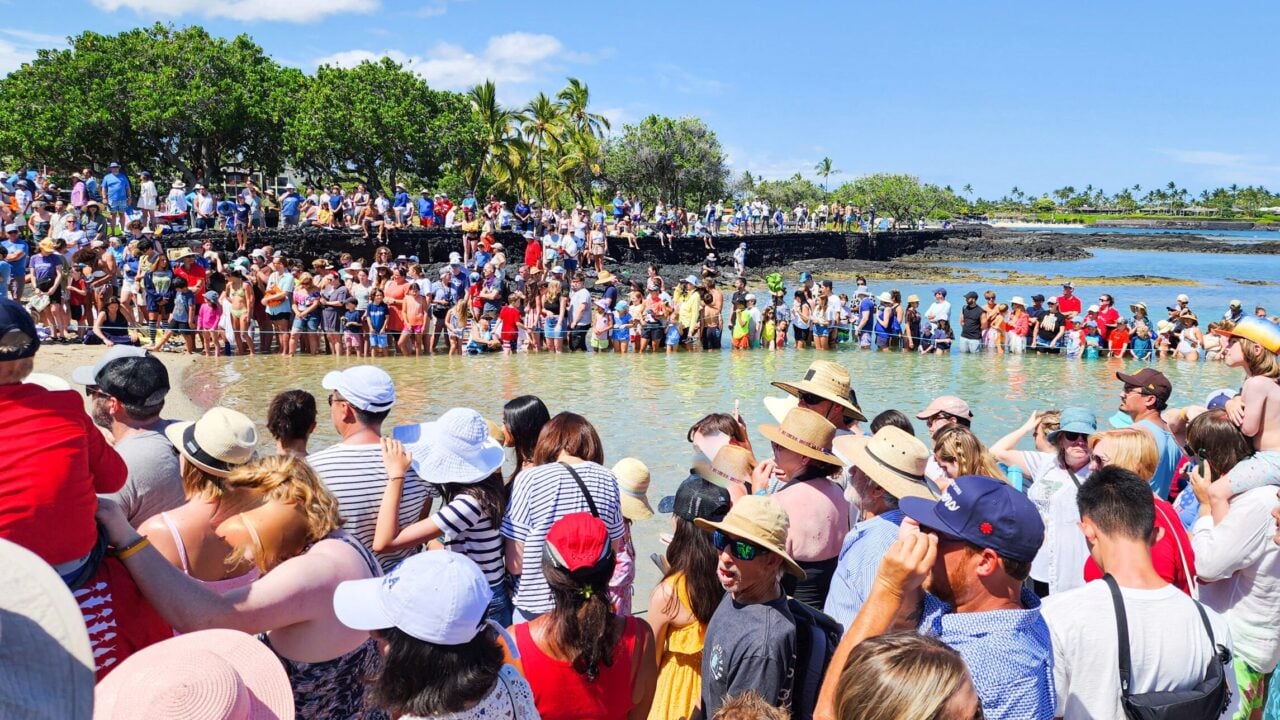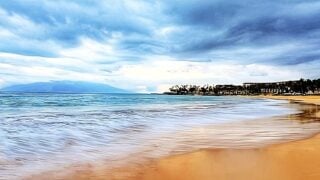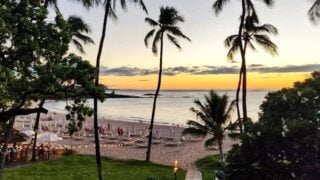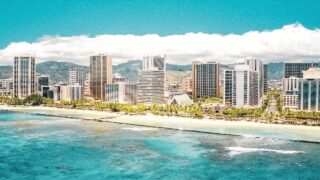Hawaii is pushing sports tourism again despite resident complaints about marathon road closures, Ironman disruptions, and surf event gridlock that locks neighborhoods in place. And now the state is spending more money on the same idea, even though the conditions that stalled it last year have not changed. The state tried a similar plan in 2024. Infrastructure did not improve, and frustration continued to grow. Yet the strategy has been revived with new funding and a bigger sports marketing push.
Visitor spending remains anemic, and arrivals are flat. That has HTA spending $1.9 million to support 21 sporting and festival events statewide. Another $700,000 is going into turning part of the Hawaii Convention Center into 45 indoor pickleball courts. Combined, HTA is committing $2.6 million to the sports tourism push.
The hope is to spark new demand and attract new types of visitors. Residents, however, say the state is already stretching infrastructure to its limits with the events it has now. Visitors say Hawaii is already too expensive and too complicated for most sports travel, with airfare, hotel prices, and basic logistics making it unrealistic compared to far cheaper mainland destinations.
Sports tourism revamp is a mix of two different things.
One is the long-standing and well-respected sports culture Hawaii already has: the Honolulu Marathon, Ironman, North Shore surf contests, and the Kauai Marathon. These events have been woven into Hawaii life for decades. Residents plan around them. Visitors travel specifically for them. They are part of the islands’ very identity, and even these legacy events already push Hawaii’s infrastructure to the edge.
The other side of the push is entirely new. The Convention Center’s pickleball buildout is the clearest example. More than 600 people entered a recent pickleball festival there with almost no advertising, and officials are using that turnout to argue that Hawaii has untapped demand for a new slate of sports programming.
The University of Hawaii baseball team’s exhibition trip to Japan is being used similarly, positioned as a model for how collegiate sports can create international interest and, eventually, generate travel opportunities.
More events are being layered on quickly. January’s TransPacific Volleyball Championships required 1,400 matches across multiple Oahu venues in just three days. That volume showed strong participation but also exposed how difficult it is to host large competitions without centralized facilities. HTA’s current funding now supports everything from paddling races and surf meets to regional tournaments that the state believes can generate year-round interest.
The problem is that none of this addresses the question raised last year. If Hawaii already struggles to support its core homegrown sports traditions, as reflected in both resident and visitor sentiment, how will adding a new stack of manufactured events fix anything?
Why the state thinks this works.
Officials are pointing to national sports tourism numbers and enthusiasm to justify this push. Across the country, sports travel generated an estimated $47.1 billion in 2024, with more than 109 million people traveling by driving or flying to attend events. It looks impressive on paper. Hawaii officials clearly want a piece of that market. But the very conditions that make those mainland events work exist here.
Hawaii has never done well with large spectator events. That part of the equation has not changed. HTA’s materials describe sports tourism as a way to strengthen Hawaii’s brand and attract higher-spend visitors, but they do not address the same infrastructure limits that have held the state back for decades.
The comparison to Las Vegas resurfaces, but it falls apart upon closer inspection. Vegas has inexpensive rooms, massive venues, endless transportation, and revenue from gambling to support it all. Hawaii has none of those advantages. Readers pointed that out last year, and the reality is still the same now.
What happened last year.
When BOH covered the first version of this plan in 2024, readers commented, raising the same concerns that resurfaced now.
Residents said Hawaii can barely manage the events it already hosts. One reader described paddling athletes walking from the airport because traffic around Keehi Lagoon was so backed up. Another noted that Ironman had to split its men’s and women’s races because Kona could not handle both at once.
Visitors also said the economics were unrealistic. Several pointed out that youth teams and families choose cities where hotel rooms cost a fraction of Hawaii’s rates. Others said airfare costs alone remove Hawaii from consideration for most regional tournaments.
Readers also questioned copying Las Vegas in any way. They reminded officials that Hawaii has already lost the Pro Bowl, many professional golf tournaments, and multiple stadium plans because the infrastructure and economics do not support large spectator sports. One reader put it plainly: Hawaii struggles with the events it has, so why add more? And, none of last year’s concerns are addressed in this year’s plan.
Hawaii’s infrastructure reality.
Honolulu Marathon weekend still shuts down major roads from Waikiki to Honolulu. Some hotels now even warn guests that marathon morning can affect airport access, especially for early flights. Residents describe the morning as a maze of rolling closures that is difficult to navigate even when planned for.
Ironman continues to tighten access along Alii Drive on the Big Island. Parking disappears, the waterfront becomes a staging area, and large parts of Kona feel overtaken for days around the race. Splitting the men’s and women’s championships did not change the underlying strain on the community.
Major North Shore surf contests still bring traffic backups before sunrise. Parking lots fill immediately, congestion stretches along Kamehameha Highway, and emergency response becomes more complicated when the surf is up and crowds are heavy.
Hawaii also lacks the venues needed for large spectator sports. Aloha Stadium’s history is a clear warning. The original 50,000-seat facility was built to mimic mainland stadiums, spent decades rusting and shrinking, and eventually shut down entirely. The replacement is planned at roughly half the size, which says everything about how difficult it is to make large spectator venues work here.
Beach parks and coastal areas also take a hit during major events, and the same strain returns every season because nothing meaningful has changed.
The spending question.
The promise behind sports tourism is higher spending, but that remains unproven. Many marathon runners often travel in groups, share accommodations, and cook meals to offset high prices. Ironman athletes do the same. Youth teams and families consistently choose more affordable mainland cities.
The Las Vegas comparison also breaks down quickly. Vegas works because overall costs are low and revenue streams are broad. Hawaii has neither.
Where this leaves Hawaii.
Hawaii is reviving a strategy that residents and visitors strongly opposed last year. The state has invested new funds in the idea and updated its messaging. Yet last year’s concerns remain unaddressed, and the same infrastructure limitations are still here.
Will this boost visitor spending or increase strain on communities that already feel overwhelmed during major events? Residents and visitors answered that question last year with detailed objections. Officials are betting this time, however, they can succeed.
Get Breaking Hawaii Travel News







Most people roll their eyes and quickly reply “will not attend” when they receive invitations to destination weddings in Hawaii. For the same reasons most people will also say NO to sports events in Hawaii.
There was this place… Aloha Stadium… near Pearl Harbor, right off the H1 freeway and Kam Highway… pretty good sports and concert venue (Billy Joel rocked there on his way back from his Soviet Union tour).
Had lots of parking too.
I wonder what happened to it?
Hawaii sucks at maintaining its own infrastructure.
I’m from the Bay Area and used to come for the marathon. I stopped because the price of everything was too much. The race was great but the hotels were insane. I don’t think officials realize how expensive Hawaii feels to people now.
I’m a teacher and our students do softball and volleyball tournaments on the mainland all the time. Hawaii is never an option because the airfare alone kills the budget. The state trying to position itself as a regional sports hub is a joke. We already know families cannot afford it.
I grew up on Oahu and paddling season is already tough to navigate as a parent and coach. We love the culture around it, but traffic, parking, and beach access are major issues even with our long-standing events. I don’t see how adding a whole new layer of tournaments will help anyone.
I travel to Hawaii every year for Ironman and even that is starting to wear thin. Kona is bursting at the seams during race week. People think Ironman is some gold mine but most of us are splitting houses, cooking our own food, and doing everything possible to keep costs down. Adding new events will not magically make us spend more.
I live near Waikiki and the marathon weekend is already chaos. I can’t imagine adding even more events on top of that. The idea that this is going to fix our visitor spending problem feels like wishful thinking.
As I see it, traveling as a single to an event can be planned. For team events especially youth I can’t see it working. My niece plays vollyball with two different teams. Each team has 10 to 12 players, chaperones and coaching staff. they travel the western states and an occasional meet back east. To travel to Hawai’i would put a huge financial strain on the players. I was surprised last summer to see at least two teams from Hawai’i at the meet in Phoenix. It was interesting to talk with some of the parents on the teams who told me that to try out you need to know it’s very expensive so it cuts out many kids who are good but not affluent. In Phoenix I believe there were 120 teams that played daily over 5 days…Hawai’i would be a no go.
The phrase “It’s the economy, stupid” was coined by James Carville and that is why Hawaiian Tourism is either flat or in the decline.
If you’re a baby boomer vested in the stock market or metals you are killing it, but most of the prior and post pandemic economy was driven by government spending. That money has dried up and those that relied on it are feeling the pinch.
So HTA spend away, but It’s the economy stupid that is causing most popular travel destination tourism to decline.
Here’s how to enjoy Maui cheaply I met two guys who did it, rented nothing but road bikes, out of sight tent camping, ate cheaply, rode around and across Maui.